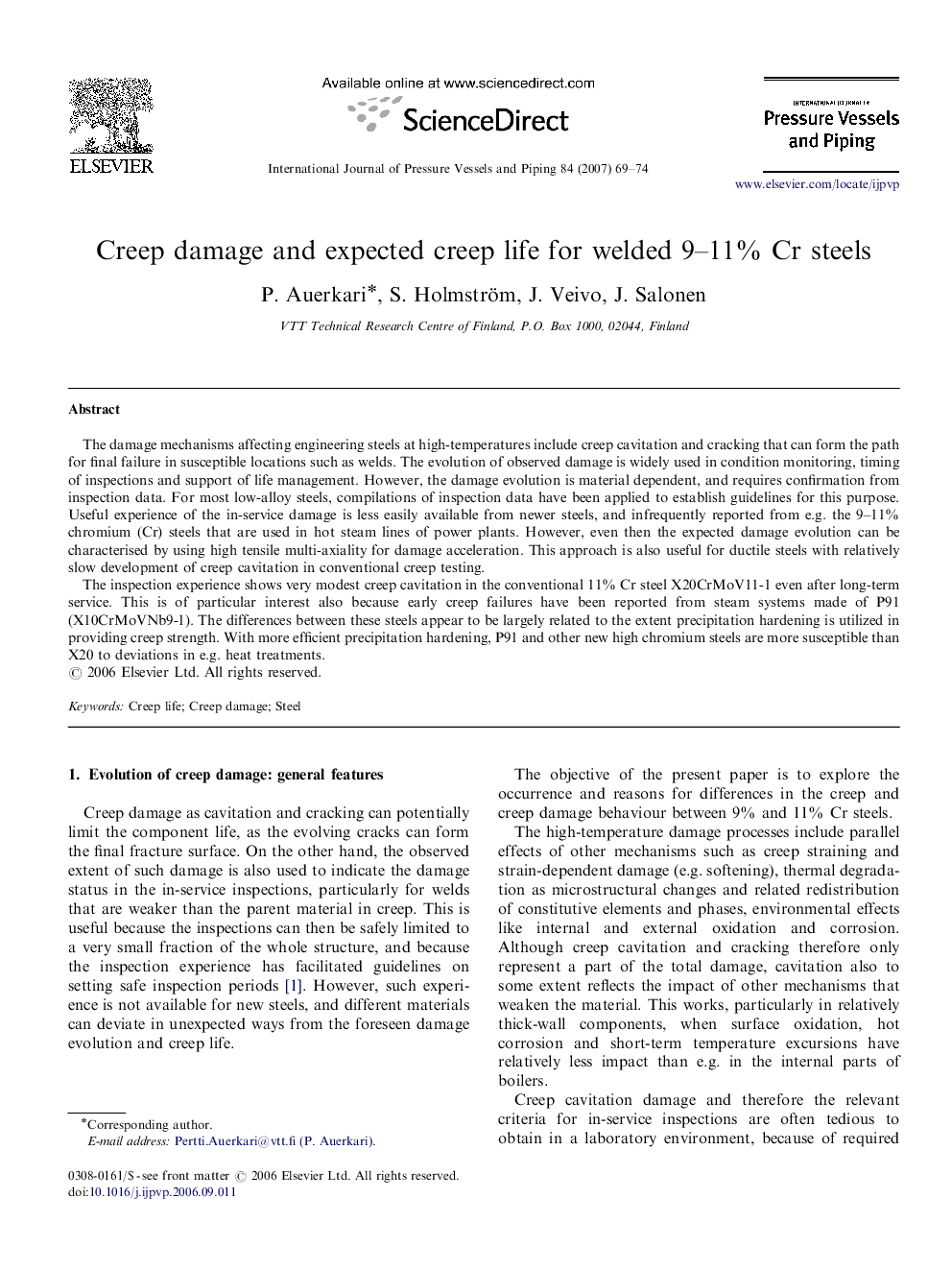| کد مقاله | کد نشریه | سال انتشار | مقاله انگلیسی | نسخه تمام متن |
|---|---|---|---|---|
| 785757 | 1466146 | 2007 | 6 صفحه PDF | دانلود رایگان |

The damage mechanisms affecting engineering steels at high-temperatures include creep cavitation and cracking that can form the path for final failure in susceptible locations such as welds. The evolution of observed damage is widely used in condition monitoring, timing of inspections and support of life management. However, the damage evolution is material dependent, and requires confirmation from inspection data. For most low-alloy steels, compilations of inspection data have been applied to establish guidelines for this purpose. Useful experience of the in-service damage is less easily available from newer steels, and infrequently reported from e.g. the 9–11% chromium (Cr) steels that are used in hot steam lines of power plants. However, even then the expected damage evolution can be characterised by using high tensile multi-axiality for damage acceleration. This approach is also useful for ductile steels with relatively slow development of creep cavitation in conventional creep testing.The inspection experience shows very modest creep cavitation in the conventional 11% Cr steel X20CrMoV11-1 even after long-term service. This is of particular interest also because early creep failures have been reported from steam systems made of P91 (X10CrMoVNb9-1). The differences between these steels appear to be largely related to the extent precipitation hardening is utilized in providing creep strength. With more efficient precipitation hardening, P91 and other new high chromium steels are more susceptible than X20 to deviations in e.g. heat treatments.
Journal: International Journal of Pressure Vessels and Piping - Volume 84, Issues 1–2, January–February 2007, Pages 69–74